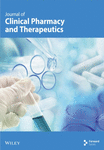Decrease in emergency room or urgent care visits due to management of bronchial asthma inpatients and outpatients with pharmaceutical services
Abstract
Objective: To evaluate pharmaceutical care of bronchial asthma over a 1-year period and to investigate whether such care is effective. Methods: 79 male and 97 female asthma patients who were treated with theophylline and other drugs between June 1994 and September 1996 were studied. The 15 subjects received pharmaceutical care (group 1) and were all inpatient asthmatics who had been admitted to the hospital for treatment. The other patients acted as controls. Results: In 1994, the average medication cost of asthma patients without pharmaceutical care was $199/month and $295/month when such care was provided in the outpatient clinic. The drug treatments which patients received generally included inhaled anti-inflammatory agents and theophylline, but the 161 non-pharmaceutical services patients (group 2) received fewer inhaled anti-inflammatory agents than group 1 patients. The number of visits to the emergency room and hospital admissions were significantly lower in patients after receiving pharmaceutical services than inpatients before receiving pharmaceutical services during our observation period. The serum theophylline concentrations of group 1 patients generally attained levels sufficient for favourable therapeutic effect after patients received pharmaceutical care. Conclusion: Pharmaceutical care offered at the hospital is effective in the management of asthma patients.




